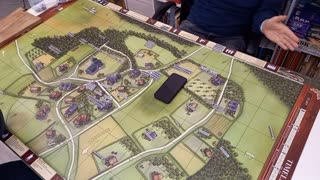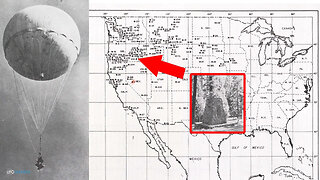Mike in the Night 461, Digital Prison is being built around Us , Rate hike Destruction Ahead, World War Woke, Taiwan smoke screen, Supreme Cannon Unloads with Russia, Russia is winning this war of Attrition
Mike in the Night 461, Digital Prison is being built around Us , World War Woke, Taiwan smoke screen, Supreme Cannon Unloads with Russia,
A war of attrition is a type of conflict characterized by a protracted struggle in which each side aims to wear down the other through a prolonged series of small-scale battles and constant pressure. The term "war of attrition" originated from the French phrase "guerre d'usure," which literally means "war of wearing down." In such a war, victory is not sought through a decisive, swift blow, but rather through the gradual erosion of the enemy's resources, willpower, and ability to fight.
The strategy behind a war of attrition is based on the belief that the side with superior resources and endurance will eventually prevail. Instead of seeking to gain territory or achieve a quick victory, the objective is to exhaust the enemy's manpower, supplies, and morale over an extended period. By prolonging the conflict and inflicting constant losses on the opponent, the hope is that they will become demoralized, economically drained, and ultimately forced to surrender.
One of the earliest examples of a war of attrition is the Peloponnesian War (431-404 BCE) between Athens and Sparta. Rather than engaging in large-scale battles, both sides focused on raiding and pillaging each other's territories, hoping to weaken their opponent's resolve. The duration of the conflict and the immense losses suffered by both sides demonstrated the debilitating nature of a war of attrition.
In more recent history, World War I serves as a prime example of a war of attrition. The trench warfare on the Western Front, characterized by static defenses and brutal artillery barrages, resulted in staggering casualties and a deadlock that persisted for years. The constant attritional battles, such as the Battle of Verdun and the Battle of the Somme, aimed to bleed the enemy forces dry and break their will to fight.
The key elements of a war of attrition include defensive tactics, such as fortified positions and trenches, as well as continuous engagement and constant pressure on the enemy. This type of warfare often involves a high level of casualties and a slow pace of territorial gains, if any. The intention is to make the cost of continued resistance unbearable for the enemy, leading to their eventual collapse.
In addition to the physical toll, psychological warfare plays a crucial role in a war of attrition. Propaganda, disinformation, and psychological operations aim to demoralize the enemy population, weaken their resolve, and create divisions within their ranks. By sowing doubt, spreading fear, and undermining their morale, the attacking side seeks to hasten the attritional process.
Another critical aspect of a war of attrition is the concept of the "war economy." Both sides must ensure a steady supply of resources, including manpower, weapons, food, and other essential supplies, to sustain the prolonged conflict. Countries may adopt rationing, increase industrial production, and implement conscription to mobilize their societies for the war effort. However, prolonged wars can strain economies and cause significant social upheaval, leading to public discontent and unrest.
Strategic planning and logistics are crucial in a war of attrition. Commanders must carefully allocate resources, manage supply lines, and plan offensive and defensive operations to maximize the attritional effect. Attrition rates, casualty projections, and the sustainability of the war effort become critical factors in determining the overall strategy.
Despite the potential benefits, a war of attrition also carries significant risks and drawbacks. The costs in terms of human lives and economic resources can be enormous, often leading to public disillusionment and loss of support for the war. The longer a conflict drags on, the more difficult it becomes to maintain public morale and sustain the war effort. Additionally, wars of attrition can lead to a cycle of revenge, bitterness, and escalating violence, further complicating prospects for a peaceful resolution.
In conclusion, a war
-
 6:02
6:02
Mike Martins Channel
8 months agoUkraine Proxy war is a war of attrition, money laundering Hot spot , innocent people suffering
357 -
 14:37
14:37
WHIPS1
2 months agoFinal Phase: Russian Offensive 2024
621 -
 5:39
5:39
deNAZIfication - Special Military QperationZ WORLDWIDE
9 months ago25.08. - 01.09.23 Russian Defence Ministry report - deNAZIficationMilitaryQperationZ
3.53K2 -
 6:31
6:31
LifeTheBattlefield
1 year agos the modern world engaged in a proxy war?
64 -
 20:46
20:46
Marshals Unleashed Napoleonic Wargaming
4 months ago $0.01 earnedGameplay battle for Plancenoit - Marshals Unleashed Napoleonic Wargaming
181 -
 15:07
15:07
Declarations of Truth
1 year agoChina preparing for war?
218 -
 58:11
58:11
UFO Seekers ®
5 months agoJapanese Balloon Bombs, USA "Office of Censorship", Crash Sites on American Soil
2062 -
 45:58
45:58
Mises Institute
1 year agoThe True Costs of a US-China War for Taiwan
39 -
 58:46
58:46
The Memory Hole
2 months agoThe CIA, Terrorism, Assassination & the Next War: Propaganda & Global Warfare (1984)
1.23K1 -
 16:26
16:26
World News and Events
4 months agoJudging Freedom& Douglas McGregor: Does America need foreign bases?
3.71K3